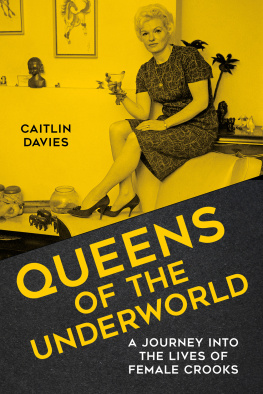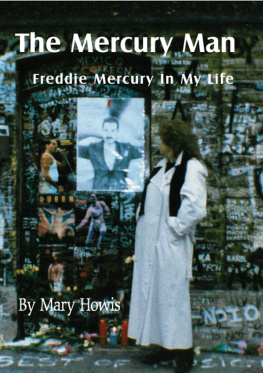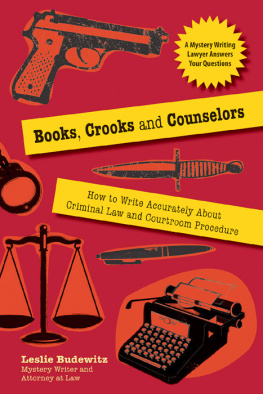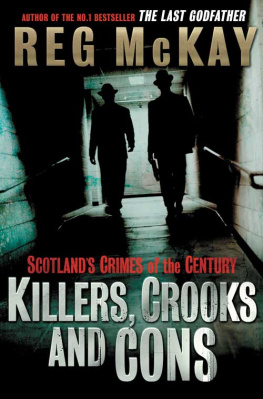Vikas Khatri - World Famous Crooks & Con Men
Here you can read online Vikas Khatri - World Famous Crooks & Con Men full text of the book (entire story) in english for free. Download pdf and epub, get meaning, cover and reviews about this ebook. year: 2011, publisher: ePub Direct;Pustak Mahal, genre: Detective and thriller. Description of the work, (preface) as well as reviews are available. Best literature library LitArk.com created for fans of good reading and offers a wide selection of genres:
Romance novel
Science fiction
Adventure
Detective
Science
History
Home and family
Prose
Art
Politics
Computer
Non-fiction
Religion
Business
Children
Humor
Choose a favorite category and find really read worthwhile books. Enjoy immersion in the world of imagination, feel the emotions of the characters or learn something new for yourself, make an fascinating discovery.

- Book:World Famous Crooks & Con Men
- Author:
- Publisher:ePub Direct;Pustak Mahal
- Genre:
- Year:2011
- Rating:5 / 5
- Favourites:Add to favourites
- Your mark:
- 100
- 1
- 2
- 3
- 4
- 5
World Famous Crooks & Con Men: summary, description and annotation
We offer to read an annotation, description, summary or preface (depends on what the author of the book "World Famous Crooks & Con Men" wrote himself). If you haven't found the necessary information about the book — write in the comments, we will try to find it.
Mildly speaking crooks are dishonest persons and con means cheating. Con men are cheaters and both crooks or con men are criminals.
World Famous Crooks & Con Men — read online for free the complete book (whole text) full work
Below is the text of the book, divided by pages. System saving the place of the last page read, allows you to conveniently read the book "World Famous Crooks & Con Men" online for free, without having to search again every time where you left off. Put a bookmark, and you can go to the page where you finished reading at any time.
Font size:
Interval:
Bookmark:
Mysterious Anastasia
T sar Nicholas II rose uneasily to his feet as the door burst open and the cellar filled with grim-faced men carrying revolvers and bayonets. At their head stood Jacob Yurovsky, the Russian Royal familys gaoler. He quickly read out a few words from a piece of paper clutched in his hand: it was an execution order, signed by the Ekaterinburg Soviet.
The Tsar started to protest, but Yurovsky was already giving the order to fire. Nicholas died first, vainly trying to shield his wife, Alexandra. Those not killed by the bullets were stabbed, pathetically attempting to ward off the thrusts with cushions. It was soon over. None had been spared. Even the familys pet spaniel had been clubbed to death. The Tsar, his immediate family, their physician and two servants lay in a tangled, bloody heap on the floor.
The bodies were left in the cellar for a few days, and then they were taken out, soaked in gasoline, burnt beyond
recognition and thrown down a disused mine shaft. The grisly remains were discovered eleven days later by soldiers of the White Armies, when they captured Ekaterinburg on July 27, 1918. There was, of course, an international outcry against this latest Soviet atrocity. Lenins Moscow government denied responsibility and ignored the protests. But their blame was never in doubt, as the subsequent murders of other members of the Imperial Romanov family proved.
Improbable Story
Those supporters of the Tsar who remained alive fled and established aristocratic but poverty-stricken little groups throughout the capitals of Europe. And it was to one such group in Berlin that a woman, telling a strange and improbable story, presented herself in 1920. Giving her name as Madame Tchaikovsky, she claimed that she was in fact the Grand Duchess Anastasia, youngest daughter of the Tsar. Not everyone, it seemed, had died in the cellar....
The Berlin Tsarists were led by Prince Constantine Gabriel, and he was impressed with Anastasia. So too was Gleb Botkin, whose father was the physician who had been killed with the Royal family. Madame Tchaikovskys story was certainly gripping. She said that she had miraculously escaped both the bullets and the bayonets and had been rescued from the cellar by a soldier called Tchaikovsky. They had then made off together in a covered wagon while the Bolsheviks searched frantically for the missing body.
After crossing war-torn Russia, they arrived in Bucharest, where Madame Tchaikovsky gave birth to a child. It was the shame of this, she said, which prevented her from contacting her Rumanian relatives. Tchaikovsky then disappeared. No one knows where, although it was later rumoured that he had been murdered by Soviet agents. Madame Tchaikovsky decided the only thing she could do was make her way to Berlin and seek safety and recognition there.
Incredible though her story was, there were a great many influential people, such as Gabriel and Botkin, prepared to believe it; there were others, notably her paternal aunt, the Grand Duchess Olga and the Grand Duke Andrew, who believed her at first but changed their minds later.
Those who championed Madame Tchaikovsky alleged that her detractors were motivated solely by greed. It was thought, although never verified, that the Tsar had deposited millions of roubles with the Bank of England; if Madame Tchaikovsky could indisputably prove her identity as the Tsars closest surviving relative, then this fortune would presumably pass to her and not the Romanovs.
Mentally Unbalanced
No matter how many times she was questioned, Madame Tchaikovskys story never changed, and soon she was being accorded the honours due a Ts ars daughter. . This did not, however, stop her attempting to kill herself a short time later, and rumours began to the effect that she had become mentally unbalanced. In a curious way, though, this strengthened peoples belief in her, and their belief was endorsed by other events. A former nurse to the Royal family was introduced to Madame Tchaikovsky and immediately vowed that she was the real Anastasia. Gleb Botkin persistently supported her claim. After all, he said, did we not play together as children?
But the Grand Dukes Cyrilwho proclaimed himself Protector of the Russian Throne in 1922and Boris remained determinedly unconvinced, and Captain Djamgaroff, another refugee, was also scornful of Madame Tchaikovsky. He said: It has not been definitely proved who she really is. But there can be no doubt that she is insane, suffering from a persecution mania with its customary symptomthe delusion of grandeur.
A few years later a woman called Frau von Ratieff published her memoirs. The book not only stated that Madame Tchaikovsky was Anastasia but also accused the Grand Dukes Cyril and Boris of actively plotting her discredit. If Madame Tchaikovsky was really who she said she was, they would no longer be able to feel secure as the heads of the surviving Imperial family; certain material benefits fell their way because of their position, and, said Fran Ratieff, they were understandably loath to give them up.
During this period there were several other claimants to the name Grand Duchess Anastasia, and the situation became more and more confused. Then someone had the idea of subjecting the case to scientific scrutiny. By that time the French system of Bertillonage, relying as it did on anthropometric
measurements, was widely accepted as an almost infallible method of establishing a persons identity. Why not put Madame Tchaikovsky to the test?
Possibly the leading exponent of Bertillonage was Professor Mark Bischoff, Director of the Institute of Scientific Police at Lausanne in Switzerland; and in January 1927 he was asked if he would solve the mystery. He was supplied with a number of photographs of the Grand Duchess Anastasia herself and Madame Tchaikovsky.
Absolutely Determined
The work was to take h im eight months and involved him in not only detailed studies of Madame Tchaikovsky and Anastasia but also in comparisons between them and other members of the Russian Royal family. He was absolutely determined to prove the question of identity one way or the other. Professor Bischoff was especially interested in the length of the subjects ears and the distance between the chin and middle of the eyebrows.
A profile of Anastasia and one of Madame Tchaikovsky were scaled down and partially superimposed, rather like the heads on a stamp or coin. Professor Bischoff first placed Anastasias profile uppermost with Madame Tchaikovskys behind and then reversed them. By doing this he was able to detect noticeable differences in the two outlines.
However, he was not yet satisfied, and so turned his attentions on the two ladies ears. He studied photographs of Anastasia taken at different times, including one just before the Ekaterinburg murders. In all of them the ears were identical. He reduced it to two. In both photographs the right ear was shown to be narrow at the outside edge and only slightly convoluted in the wide top half area. But Madame Tchaikovskys right ear was much broader at the e dge and more convoluted.
This was t he breakthrough Professor Bischoff had been waiting for. The test seemed absolutely conclusive. He was convinced that the woman calling herself Madame Tchaikovsky was not Anastasia; she was an impostor, and he had no
hesitation in denouncing her as one. Madame Tchaikovsky was finished. Suddenly, she found no one wanted to know her, and her erstwhile supporters melted mysteriously away. There seemed nothing she could do except leave Europe.
She was invited to visit the United States as the guest of a former Russian princess and set sailtravelling incognito on the liner Berengaria . She refused to have anything to do with the other passengers and remained isolated in her cabin throughout the entire voyage. Naturally, her fellow voyagers were intrigued, and the rumours surrounding the mysterious and secretive lady p receded the ship to New York.
Font size:
Interval:
Bookmark:
Similar books «World Famous Crooks & Con Men»
Look at similar books to World Famous Crooks & Con Men. We have selected literature similar in name and meaning in the hope of providing readers with more options to find new, interesting, not yet read works.
Discussion, reviews of the book World Famous Crooks & Con Men and just readers' own opinions. Leave your comments, write what you think about the work, its meaning or the main characters. Specify what exactly you liked and what you didn't like, and why you think so.








